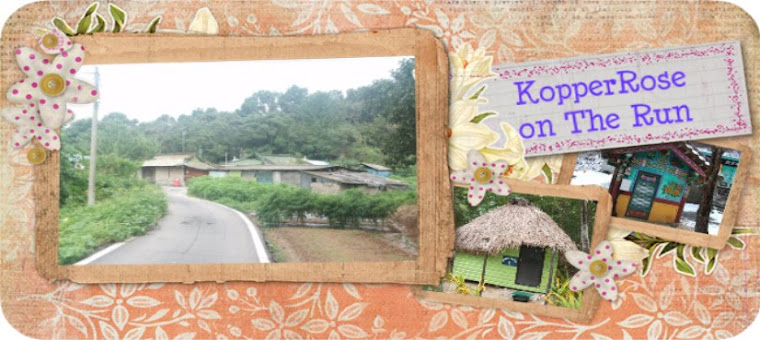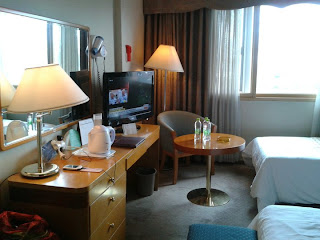My favorite place to take a break in Seoul is P.J. Hotel. The hotel is located in Seoul with easy access by taxi or bus to many interesting attractions. I usually just go there for a break- when I need a little time away from it all to think, write, read, shop and/or luxuriate in a nice bath. The only thing that's missing is room service. I honestly can't believe that they are lacking in this area. Shame, shame, shame.
Anywho, I decided to post some pics from some of my South Korea hotel and hostel stays.
PJ Hotel in Seoul near Myeondong
This hotel is a little difficult to locate but it's well worth the journey. (Don't waste your time with the subway. Taxi rides in Seoul are inexpensive) Print the map in Korean and hand it to the taxi driver and let him worry about getting you there. It's a lot better than getting lost down all those smelly side streets. Once you've had a chance to wander around, then ride the subway.
As with any hotel, the rates at P.J. vary depending on the season, day, demand, etc.
Rooms can be as much as $340 per night for a double. The room pictured below is the most expensive aside from the penthouse suites. I never spend this much but I get to stay in the nice suites because I look for deals and always book online through third-party websites. My advice to you, shop around as there is usually a better deal but be savy enough to know when it's as good as it's going to get and make your move.
Pros: Clean, spacious, extraordinarily comfortable beds, complimentary tea and kettle, nice traditional options, very friendly staff. Oh, and there's free wifi in the room.
Cons: As mentioned above, there is no room service. The place is a tad difficult to locate. The immediate area looks a little grungy (especially at night) with all the long side streets, smelly stalls and wet sidewalks but once you get past all that, it's a nice place to stay.
 |
| Entrance to PJ. Hotel, South Korea |
 |
| PJ Hotel Powder Area |
 |
| Entrance to Sleeping/Living Area |
 |
| My favorite Suite. I simply melt in these beds. |
 |
| Large, flat screen tv w/HD. I have no idea why anyone would need two but, that's how many you'll find in this suite. |
Samjung Hotel in Seoul-Gangnam
There are many expensive hotels in the vicinity. However, Samjung offers an affordable and comfortable opportunity to stay in the area without paying out the nose.
Pros: Great location, clean and comfortable rooms, good customer service, room service available. Business center. Restaurants, shopping and attractions in walking distance as a few short taxi rides. The staff is very helpful with recommendations.
Cons: No wifi in the room.
 |
| Samjung Hotel Lobby |
 |
| View from the room. |
 |
| Room was tight but alright. These are no P.J. beds but I slept well. |
 |
| Samjung at night |
 |
| Gangnam Shopping Area |
Love motel or bust. You haven't experienced all that true Korea has to offer until you've stayed in the infamous LOVE MOTEL. Contrary to popular belief, it is possible to book a room for more than a few hours. :D Also, it is possible to book a room for purposes other than a hook-up. Some of the love motels, call themselves motels while others hide under the guise of a hotel. Believe me, there isn't much of a difference in the two. However, if you can rent a room for only a few hours, it is NOT your typical hotel. If the entrance is hidden, it's not your typical hotel. If by chance, your find complimentary scented condoms in your bathroom, it is not your typical hotel. If the hallways are dark and the rooms are decorated with murals and there's only a tiny box on the wall in which light struggles to peek through, this is not your typical hotel room. They have a very odd feel about them however, many of them are quite clean (here I attempt to keep my very active imagination at bay) and accommodating; suitable for a night or two during a short sightseeing outing. However, spending an entire day in one of these rooms could be quite depressing, given the limited sunlight.
Daelim Hotel in Daejeon, South Korea
If you're spending time in Daejeon, this is a good place to stay that's very close to all the action. There are shops, restaurants, cafes, clubs, cinema, etc. Only a short walk to Downtown Daejeon which is host to a very lively night life.
Pros: Clean, spacious, affordable, friendly and helpful staff, free breakfast buffet, two desks and computers with free internet in the room, business center in the lobby. Also, there is a tea and kettle in the room as well as complimentary basic toiletries.
Cons: No wifi, breakfast buffet not so appetizing. It has that Love Motel feeling about it but, it's not so bad.
 |
| Lobby/Reception |
 |
| Hallway leading to room |
 |
| Closest thing to a double room |
 |
| Lobby/Business Center-Computers located on the wall. |
 |
| Daejeon at night |
 |
| Daejeon |
 |
|
| Daejeon |



































































